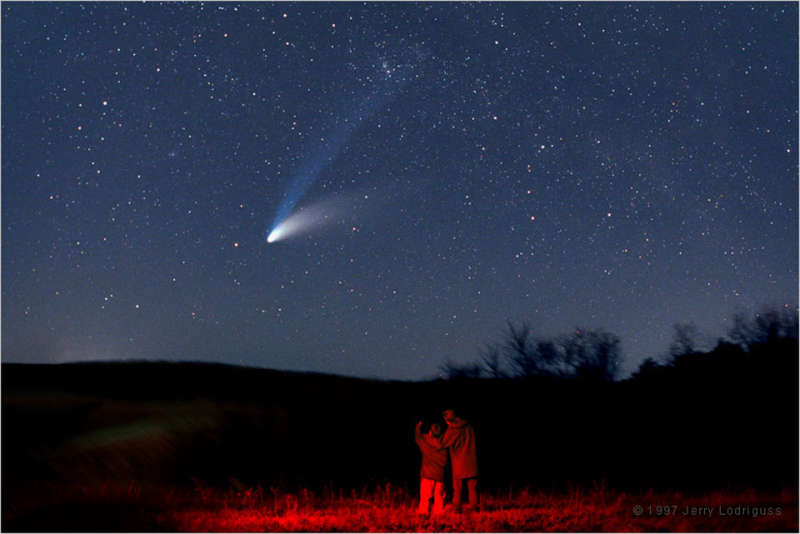Credit & Copyright: Jerry Lodriguss
(Catching the Light)
Explanation:
Sixteen years ago,
Comet
Hale-Bopp rounded the Sun and offered a dazzling spectacle in planet Earth's
night.
This
stunning view, recorded shortly after the comet's
1997 perihelion passage, features the memorable
tails
of Hale-Bopp -- a whitish dust tail and blue ion tail.
Here, the ion tail extends well over ten degrees across
the northern sky, fading near the double
star clusters
in Perseus, while the head of the comet lies near
Almach,
a bright star in the constellation Andromeda.
Do you remember Hale-Bopp?
The photographer's sons do, pictured in the foreground at
ages 12 and 15.
In all, Hale-Bopp was reported as visible
to the naked eye from roughly late May 1996 through September 1997.
Currently, sky enthusiasts await
Comet ISON's
continued brightening in the coming weeks, unsure how interesting its
first journey to the inner Solar System will be.
1999 2000 2001 2002 2003 2004 2005 2006 2007 2008 2009 2010 2011 2012 2013 2014 2015 2016 2017 2018 2019 2020 2021 2022 2023 2024 2025 |
Январь Февраль Март Апрель Май Июнь Июль Август Сентябрь Октябрь Ноябрь Декабрь |
NASA Web Site Statements, Warnings, and Disclaimers
NASA Official: Jay Norris. Specific rights apply.
A service of: LHEA at NASA / GSFC
& Michigan Tech. U.
|
Публикации с ключевыми словами:
Comet Hale-Bopp - comet - tail - комета Хейла-Боппа - кометы
Публикации со словами: Comet Hale-Bopp - comet - tail - комета Хейла-Боппа - кометы | |
См. также:
Все публикации на ту же тему >> | |
